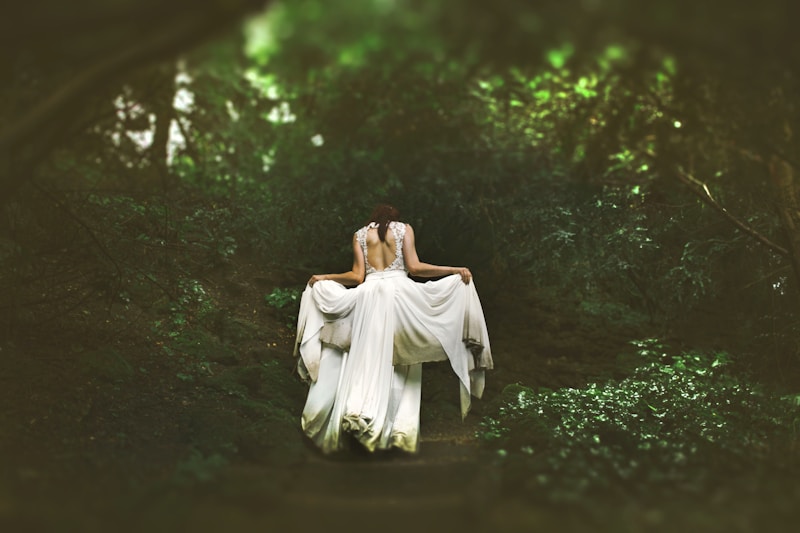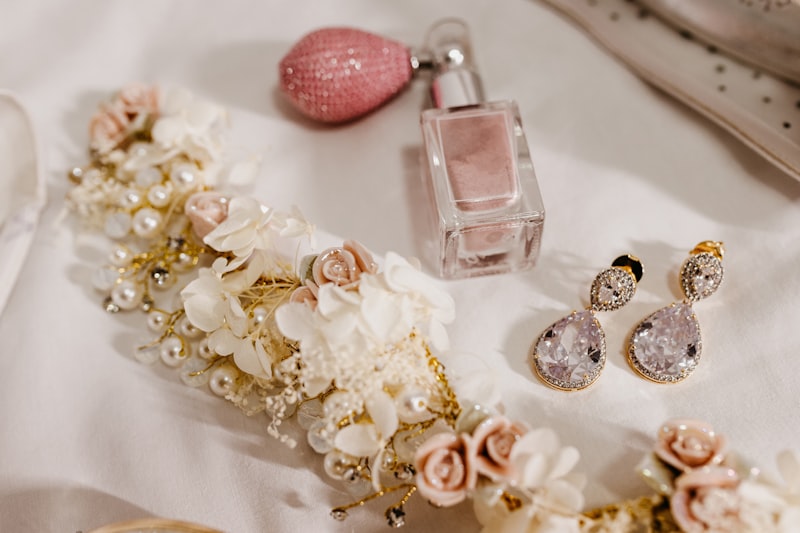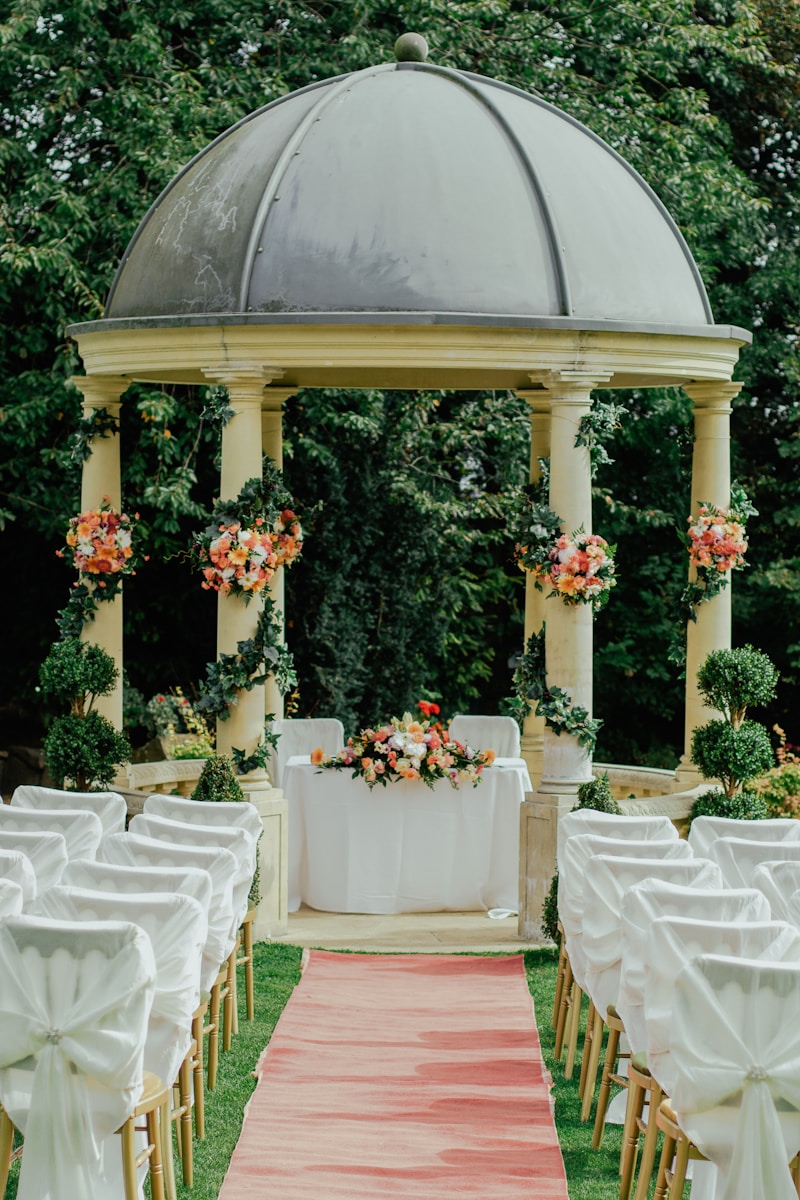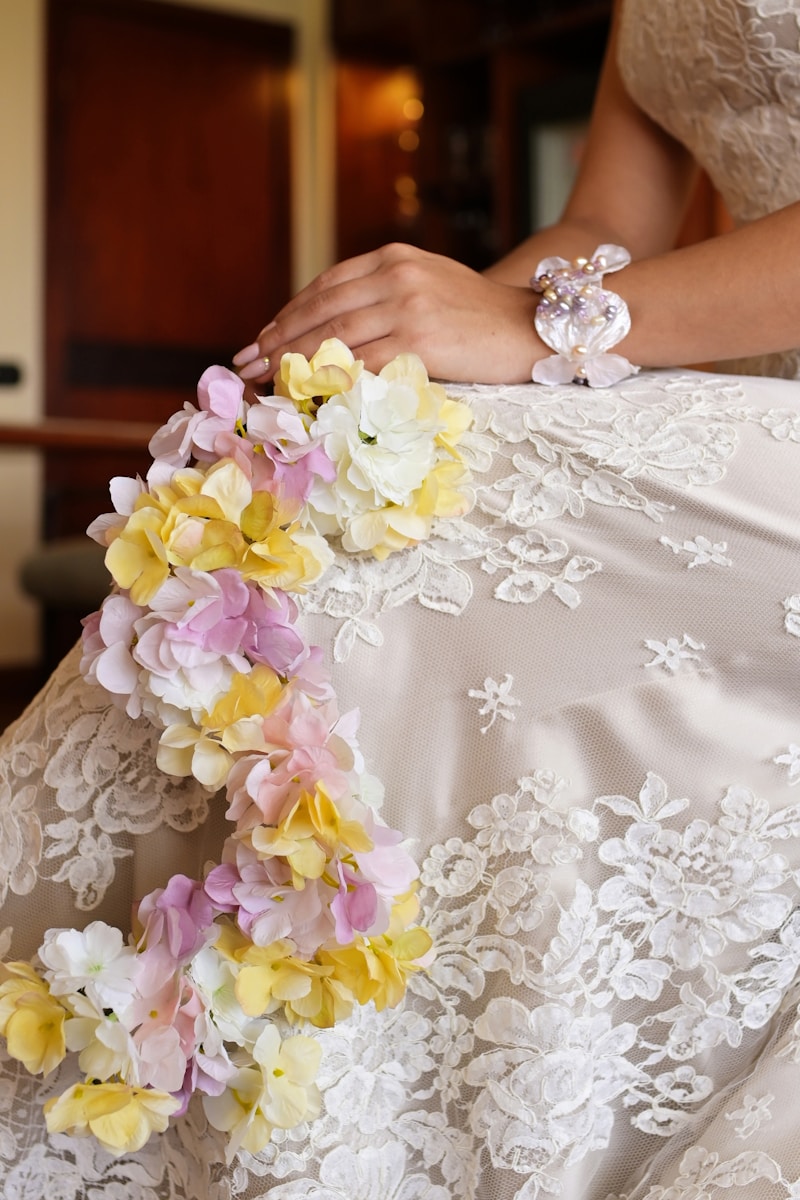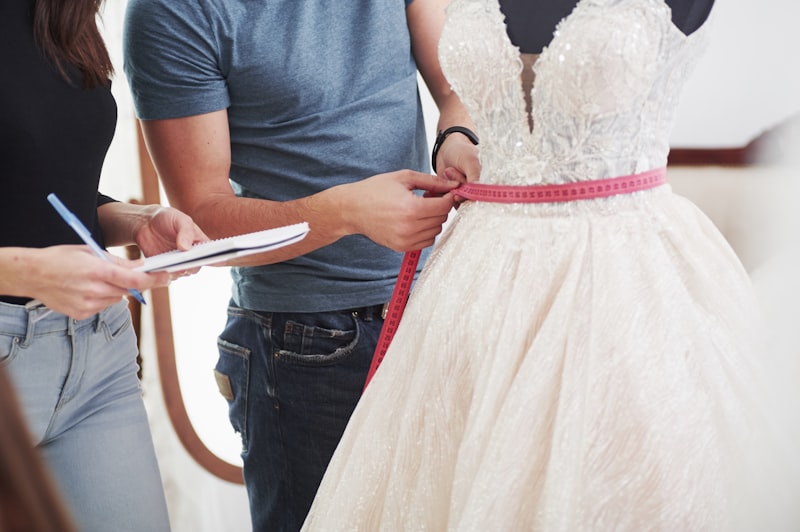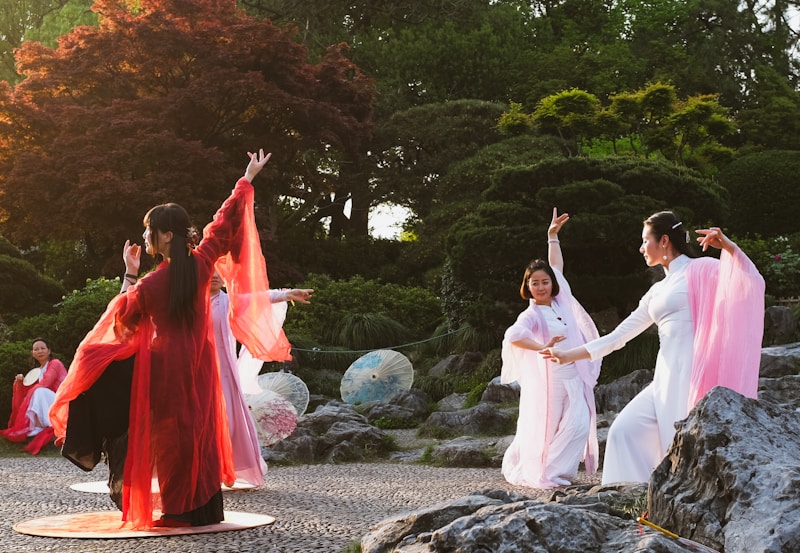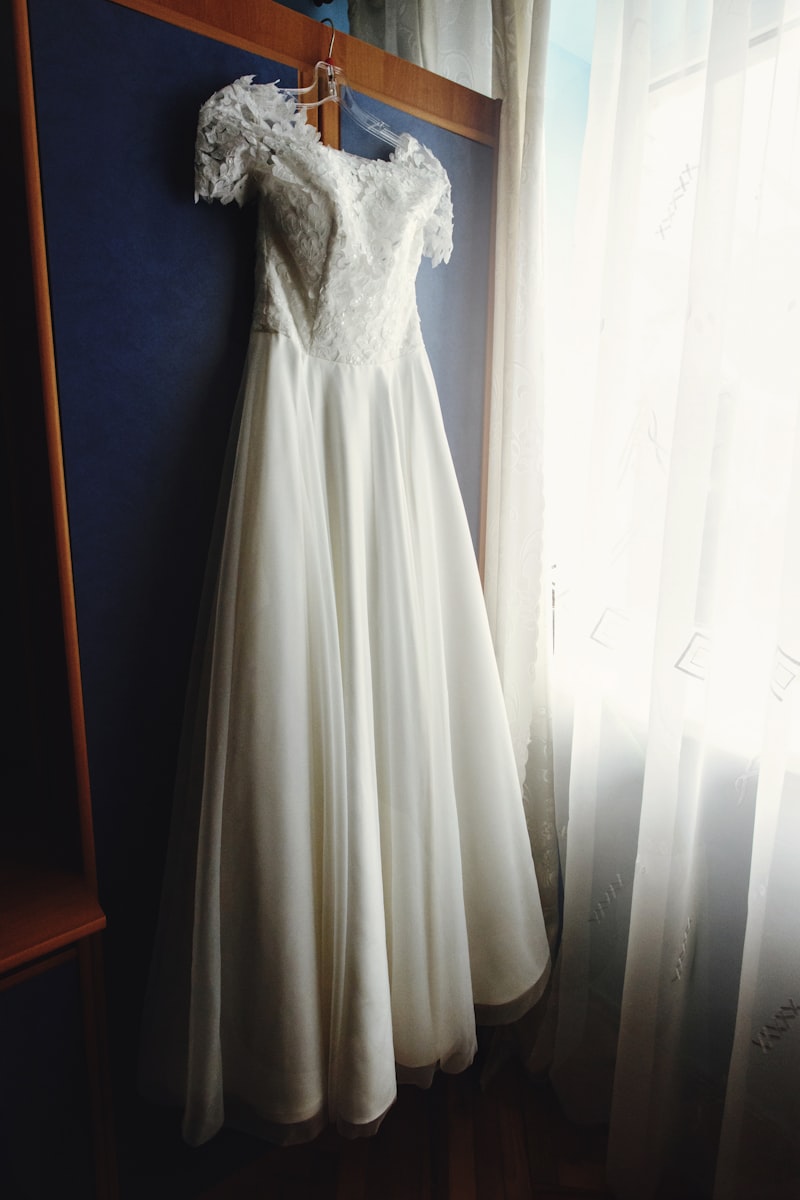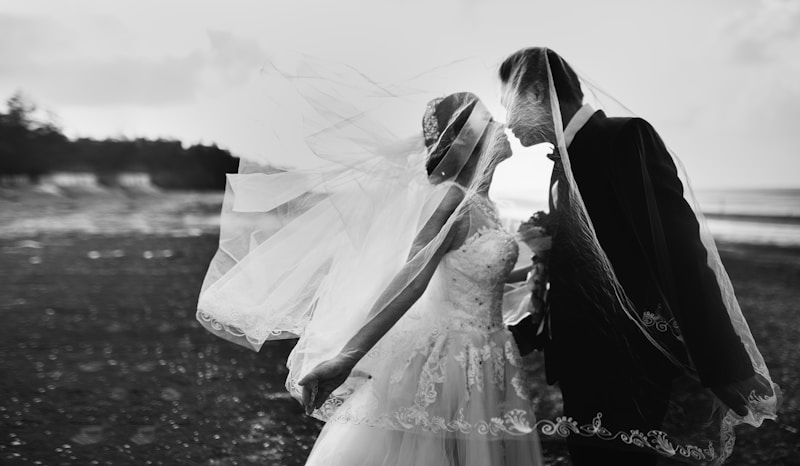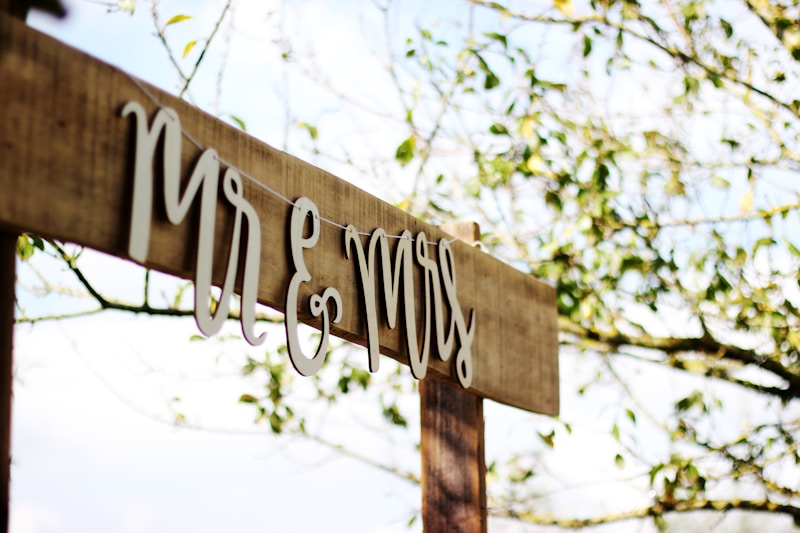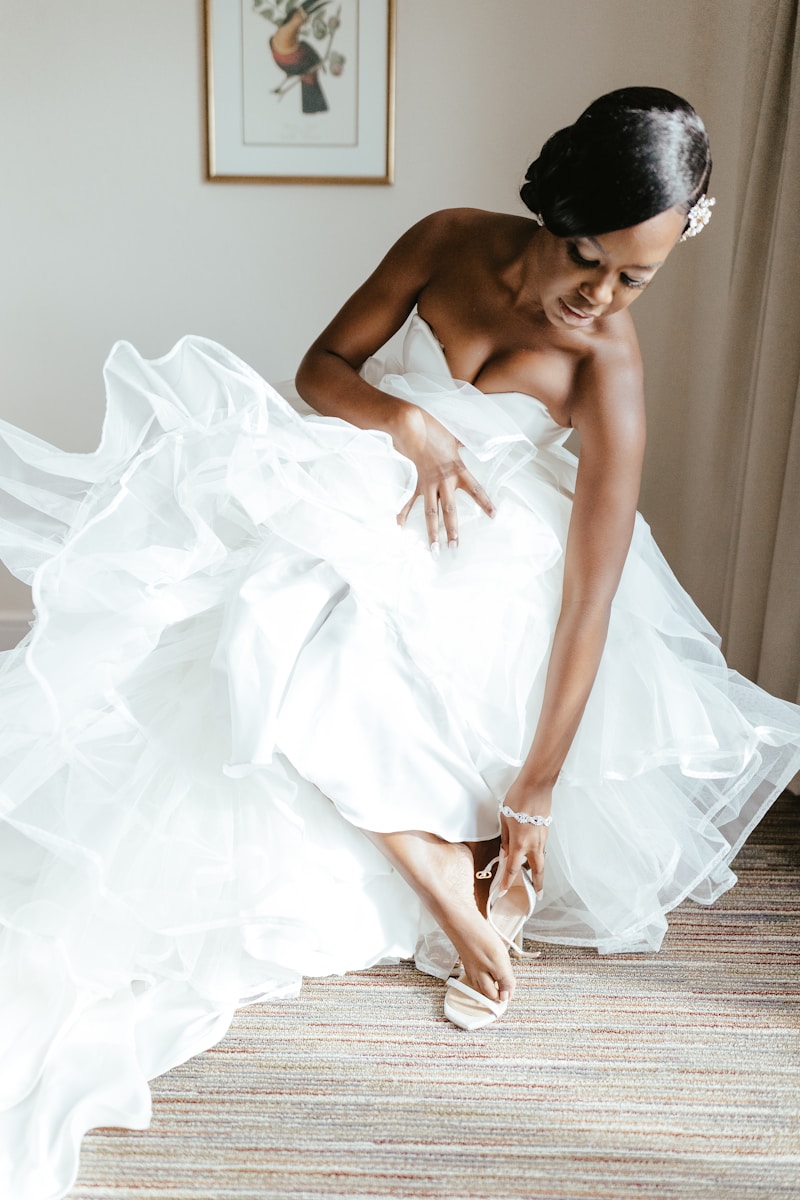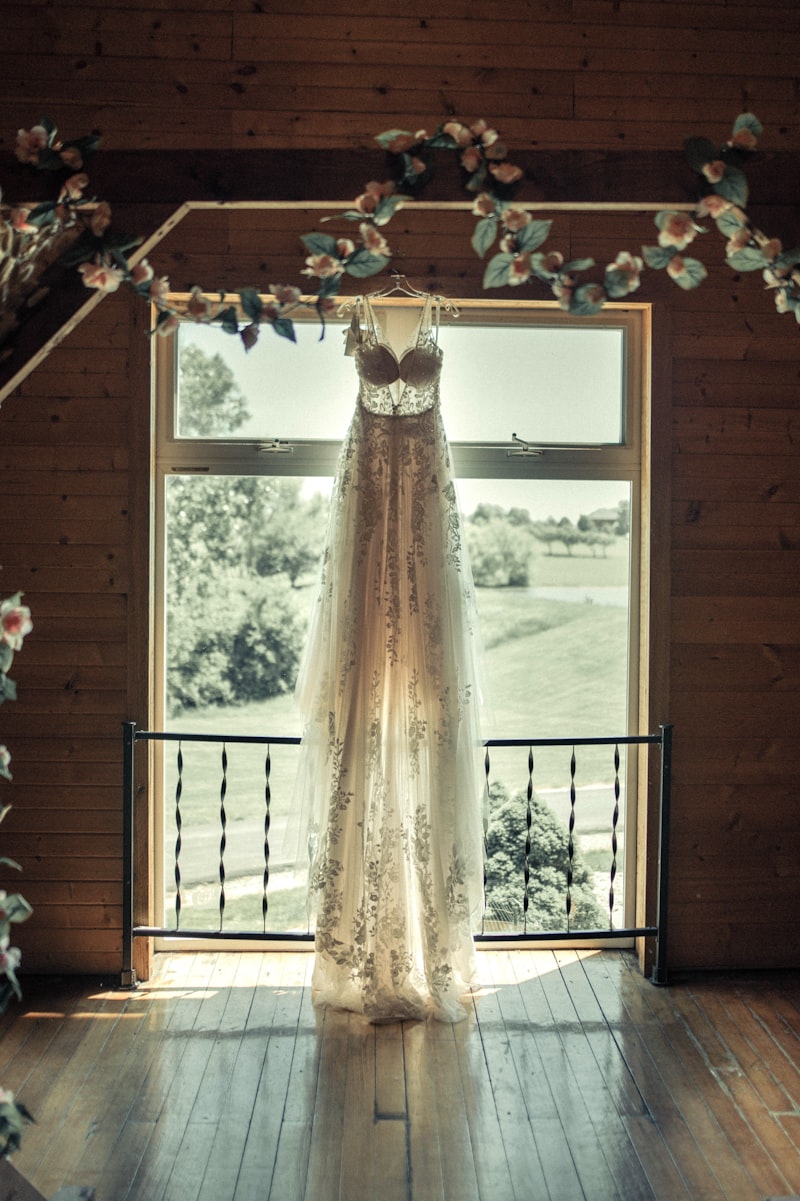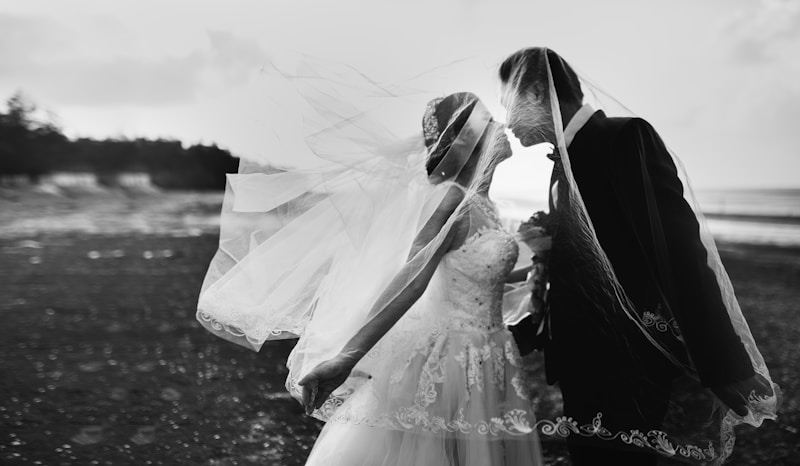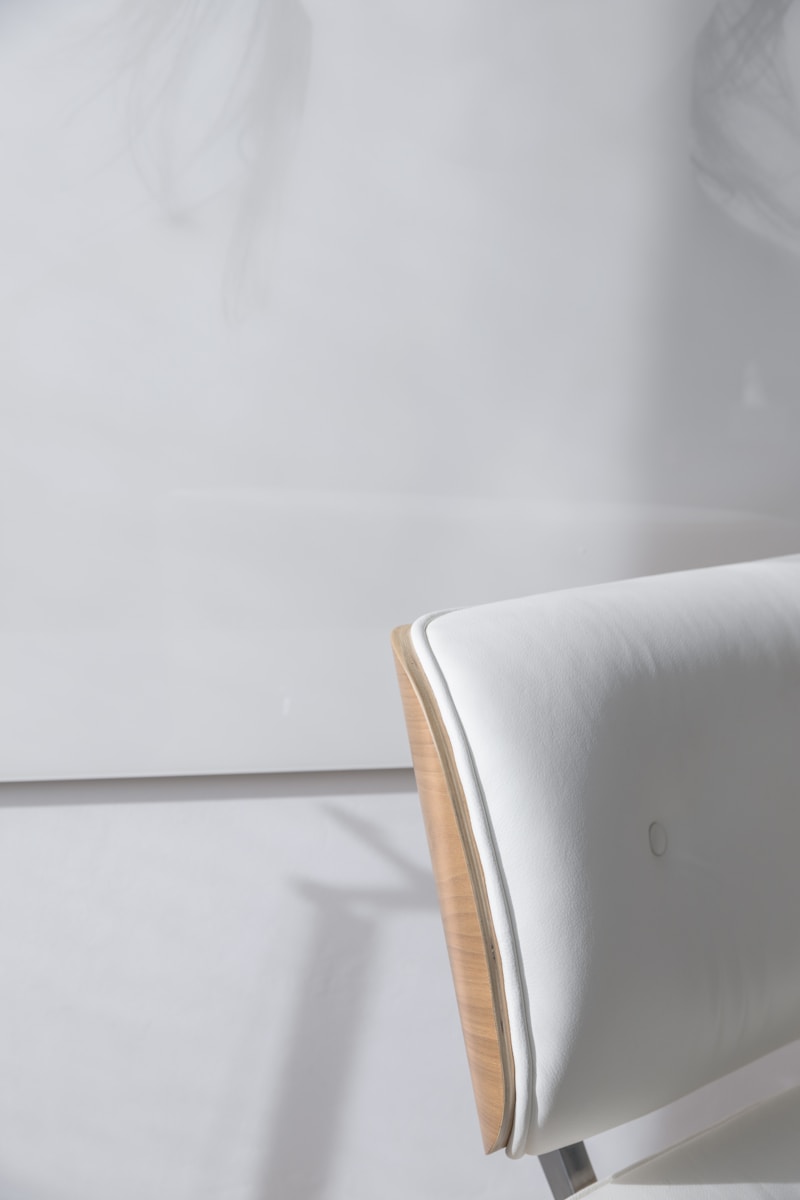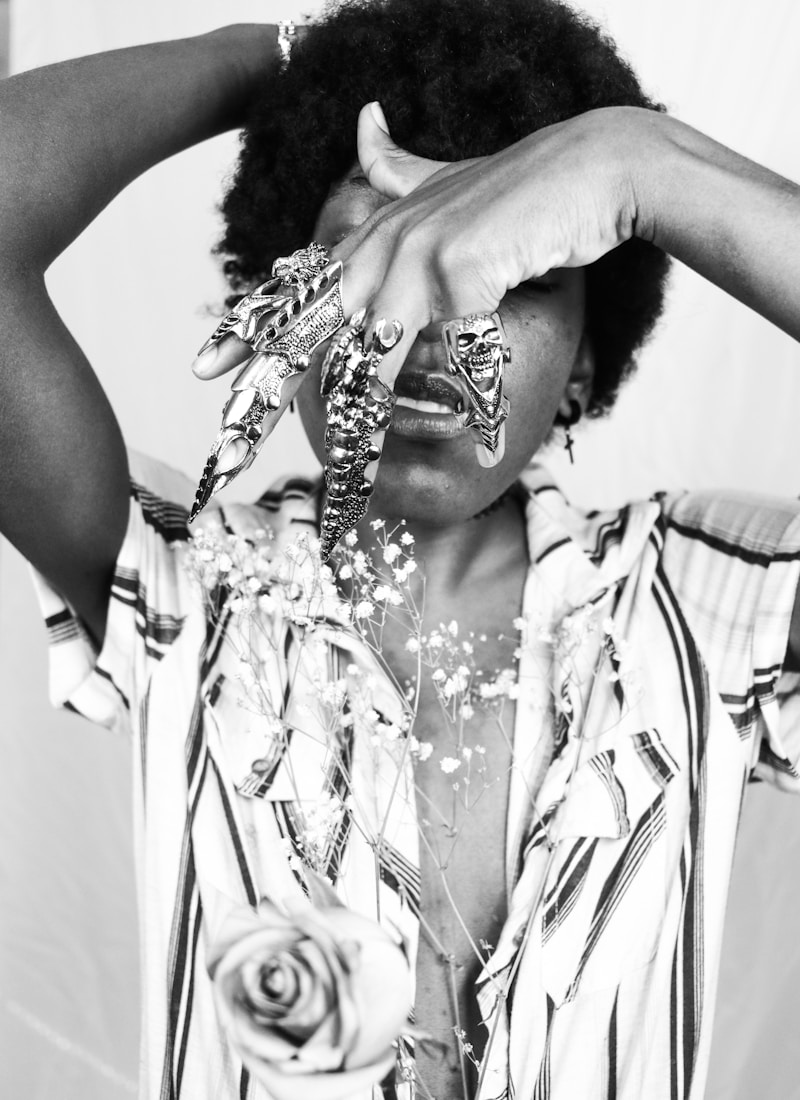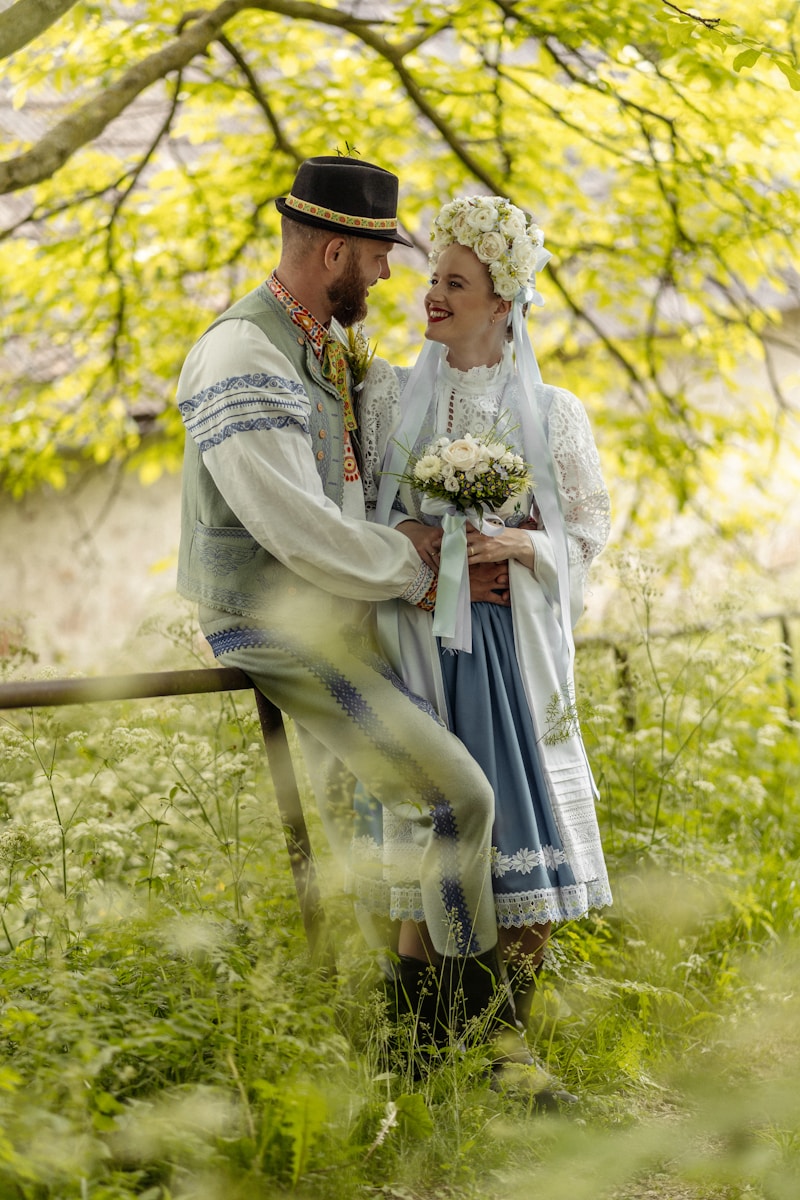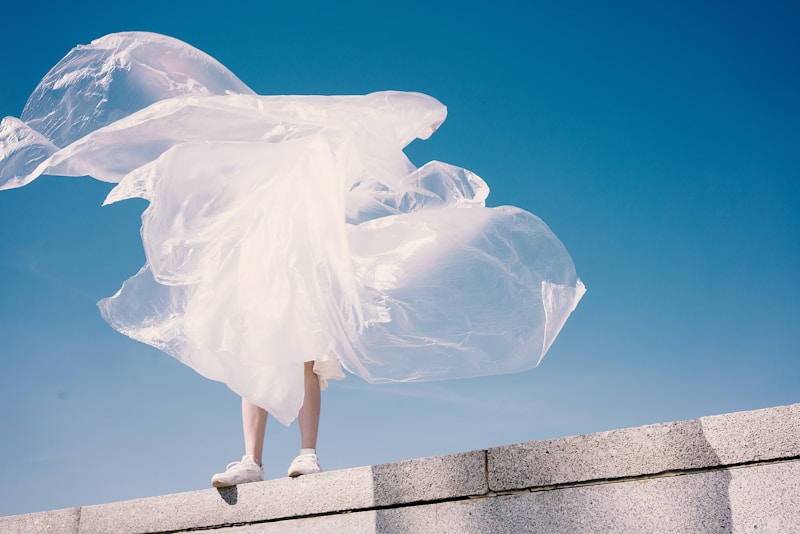The Enchanting Influence of Fairy Tales on Wedding Attire
As couples prepare for one of the most significant days of their lives, the quest for the perfect wedding attire often leads them through a myriad of styles, fabrics, and inspirations. One of the most captivating influences on modern wedding attire is fairy tales. These timeless stories not only inspire the dreams of young hearts but also shape the fashion choices of brides and grooms alike. In this article, we explore how fairy tales influence wedding attire today, highlighting popular motifs, styles, and trends that bring these magical stories to life.The Romantic Allure of Fairy TalesFrom Cinderella's iconic glass slippers to the elegant gowns worn by Disney princesses, fairy tales have long captured our imaginations. Many brides find themselves inspired by the enchanting visuals and romantic themes of these beloved stories. The influence of fairy tales can be seen in various details, from the color palette to the silhouette of the wedding dress. Let's delve into how fairy tales shape wedding fashion and the elements they contribute to modern bridal couture.1. Iconic Styles Inspired by Fairy TalesFairy tales provide a wealth of design inspiration, often translating into beautiful and unforgettable wedding attire. Popular styles influenced by fairy tales include:Fairy TaleInspiration for Wedding AttireDescriptionCinderellaBallgown StyleA voluminous skirt with a fitted bodice, often paired with intricate embellishments.Snow WhiteClassic and Timeless DressesLittle details suc...
Diverse Interpretations of Bridal Attire: A Global Perspective
The concept of bridal attire has evolved significantly over the years, influenced by cultural, social, and personal factors. From traditional gowns to modern interpretations, each culture brings its unique flair to how brides adorn themselves on their special day. In this article, we explore the diverse interpretations of bridal attire around the world, highlighting various styles, fabrics, and the meanings behind them.Understanding Bridal Attire Across CulturesThe roots of bridal attire can be traced back to ancient traditions, each with its own significance and symbolism. While Western bridal attire is often associated with the white wedding dress, other cultures have alternative colors, fabrics, and styles that reflect their heritage. Below, we delve into several cultures and their unique interpretations of bridal attire:CultureBridal AttireKey FeaturesWestern CountriesWhite Wedding DressSimplicity, elegance, often long veils and trainIndiaLehenga or SareeRich colors, intricate embroidery, and heavy jewelryChinaCheongsam or QipaoBright red, symbolizes good fortune, often embellished with goldAfrican CountriesTraditional Kente ClothVibrant patterns and colors, reflecting ethnicity and prideMiddle EastAbaya or Wedding DressLuxurious fabrics, often adorned with intricate designs and patternsCrucial Elements of Bridal AttireBridal attire often encompasses more than just the dress. It includes accessories, hairstyles, and even makeup that collectively create the look. Let’s loo...
Exploring Untraditional Elements in Bridal Couture: A New Era of Wedding Fashion
When it comes to weddings, the bridal gown is often the centerpiece of the entire ceremony. Traditional elements like white dresses and long veils have long dominated bridal couture, but today, more brides are stepping outside of the box. In recent years, there has been a significant shift towards incorporating untraditional elements in bridal couture. This article delves into the fascinating world of unconventional wedding attire and explores why these unique trends are reshaping the bridal fashion landscape.Understanding Untraditional Bridal Couture Untraditional bridal couture refers to wedding attire that deviates from standard norms and expectations. This could include unusual fabrics, non-classical colors, or even unique silhouettes that challenge centuries-old bridal traditions. The inclusion of these elements offers brides the chance to express their individuality, creativity, and personal style.Popular Untraditional ElementsBrides around the world are increasingly opting for attire that reflects their personality. Here are some of the most popular untraditional elements making waves in the bridal couture scene:ElementDescriptionUnexpected ColorsGoing beyond classic white, brides are choosing shades like blush, blue, and even bold colors like red.Unique FabricsFabrics such as velvet, leather, or even floral prints are making a mark in bridal fashion.Asymmetrical CutsAsymmetrical hemlines and non-traditional silhouettes offer a modern twist to classic designs.Non-Trad...
Creative Expression Through Wedding Fashion: A Comprehensive Guide
Expressing Love and Individuality Through Wedding FashionWeddings have long been symbols of love, unity, and celebration, but they're also powerful platforms for creative expression. As couples plan their weddings, they often explore ways to showcase their personalities, cultures, and unique stories through wedding fashion. This article delves deeper into how creative expression through wedding fashion can invigorate the traditional concept of bridal attire. We'll explore current trends, timeless styles, and tips for customizing your wedding look to make a breathtaking statement on your special day.Understanding Wedding Fashion TrendsUnderstanding the latest wedding fashion trends can help couples effectively express their unique identity. Whether it's through colors, fabrics, or styles, fashion plays a pivotal role in setting the tone for the wedding. Here’s a concise summary of the latest trends:TrendDescriptionVisual InspirationColorful Bridesmaid DressesGone are the days where bridesmaids only wear muted shades. Bright, bold colors are making a comeback, allowing for a vibrant palette that reflects the couple's personality.Mix-and-Match StylesBrides are increasingly embracing diversity in style, allowing bridesmaids to select dresses that complement their shape and style.mix and match bridesmaid fashionEco-Friendly FabricsWith an increasing concern for the environment, many couples are opting for sustainable fabrics and designs, enhancing both style and ethics.sustainable...
Evolving Gender Norms in Wedding Attire: Redefining Tradition
Over the years, wedding attire has transcended traditional gender norms, reflecting the evolving attitudes towards gender identity and expression. In today’s world, couples increasingly choose attire that resonates with their personal style rather than adhering strictly to societal expectations. This article delves into the shifting dynamics of wedding attire, examining how evolving gender norms are redefining what it means to dress for a wedding.Historical Context of Wedding AttireWedding attire has traditionally been steeped in gender norms. Historically, women wore white dresses symbolizing purity and innocence, while men donned dark suits, typically in black or navy. These established norms have persisted for decades, influencing how couples perceive their roles on their wedding day. However, as society's views on gender evolve, so too do the expectations surrounding wedding attire.The Shift in Gender NormsGender norms are, by nature, socially constructed roles that dictate how individuals should behave based on their perceived gender. The past decade has witnessed significant shifts in these norms, particularly regarding fashion and self-expression. Celebrities, designers, and influencers are increasingly challenging these binary norms, advocating for options that cater to all gender identities.Influence of CelebritiesIn recent years, many high-profile weddings have gained attention due to their unconventional attire choices. For instance, high-profile figures such as Ja...
Bridal Fashion and Social Media Trends: Shaping the Future of Weddings
Understanding Bridal Fashion in the Digital AgeThe intersection of bridal fashion and social media trends has changed the way brides approach their wedding planning. In today’s digital age, platforms like Instagram, Pinterest, and TikTok have become essential tools for brides seeking inspiration and guidance. This article explores how social media is influencing bridal fashion, what trends are emerging, and how brides can leverage these platforms to create their dream wedding.The Influence of Social Media on Bridal FashionSocial media has democratized fashion in many ways. Gone are the days when bridal fashion was dictated solely by traditional fashion houses. Now, brides have access to a wealth of inspiration at their fingertips. They can discover styles, share ideas, and connect with influencers and designers directly. Here’s how social media has reshaped the landscape:PlatformInfluence on Bridal FashionPopular TrendsInstagramVisual platform for sharing bridal looksBohemian gowns, vintage accessoriesPinterestIdea board for wedding planningRustic themes, minimalistic designsTikTokShort-video format for showcasing trendsQuick changes, unique stylesEmerging Trends in Bridal FashionAs we navigate through 2023, several bridal fashion trends are gaining traction on social media. Understanding these trends can help brides make informed choices about their wedding attire.Sustainable Fashion: Eco-friendly wedding dresses made from sustainable materials are trending as brides become ...
Exploring the Symbolism of the White Wedding Dress Worldwide
Wedding traditions vary significantly across different cultures and regions, yet one element that has gained global recognition is the white wedding dress. The symbolism behind the white wedding dress transcends borders, embodying themes of purity, love, and new beginnings. This article delves into the rich tapestry of meanings associated with white wedding dresses across various cultures, the historical evolution of this tradition, and the implications of color in wedding attire. Join us as we explore the universal appeal of the white wedding dress, illustrated with cultural insights and stunning visuals.The Historical Context of the White Wedding DressThe tradition of wearing a white dress on one’s wedding day dates back to the mid-19th century. Queen Victoria of England popularized the white gown when she chose a white gown made of silk satin for her wedding to Prince Albert in 1840. Before that, brides generally wore their best dresses, regardless of color.Queen Victoria's choice shifted the perception of wedding dresses and set a precedent that still influences modern wedding attire. Blue, for instance, was traditionally seen as the color for bridal wear, symbolizing fidelity. However, the elegance and purity associated with white soon overshadowed other colors, leading to its global acceptance.Symbolism Across CulturesWhile the white wedding dress is widely recognized today, its symbolism can differ vastly across cultures:CultureSymbolismWestern CulturesPurity and Innoc...
The Role of Fabric Choice in Wedding Dresses: Crafting the Perfect Look for Your Special Day
Choosing the right fabric for your wedding dress is one of the most crucial decisions a bride will make on her journey to the altar. The fabric not only dictates the overall look and feel but also plays a vital role in how comfortable a bride will be throughout her big day. In this article, we will explore the various fabrics available for wedding dresses, their unique qualities, and how they can enhance your bridal style.Understanding Wedding Dress FabricsWedding dresses are made from a diverse range of fabrics, each offering different aesthetic qualities, comfort levels, and drape. Here are some common fabrics used in wedding gowns:FabricCharacteristicsBest ForSatinLuxurious, glossy finish; smooth textureClassic and formal weddingsTulleLightweight and airy; often layered for volumeBall gowns and romantic stylesChiffonSoft, sheer, and floaty; drapes beautifullyDestination weddings or outdoor ceremoniesLaceIntricate patterns; adds elegance and textureTraditional and vintage-inspired gownsorganzaStiff and crisp; provides structureStructured silhouettes and layered skirtsThe Elegance of SatinSatin is synonymous with luxury and elegance. Known for its smooth texture and shiny finish, satin wedding dresses are ideal for formal ceremonies. The fabric's weight allows it to drape beautifully, enhancing the silhouette of the bride. Satin is also highly versatile, suitable for various styles, from A-line to mermaid. However, one must consider the climate; satin can be heavy, making it...
Modern Interpretations of Traditional Wedding Garments: A Fusion of Heritage and Style
IntroductionThe celebration of love and commitment is embodied in wedding ceremonies worldwide, with traditional garments playing a pivotal role in these cherished events. In recent years, the rise of modern interpretations of traditional wedding garments has sparked interest and creativity among brides, grooms, and designers alike. This article explores the evolution of these garments, how they are being reimagined today, and the cultural significance behind them. What Are Traditional Wedding Garments?Traditional wedding garments vary significantly across cultures, each holding unique meanings and symbols. Let's take a closer look at some examples from around the world: Cultural RegionTraditional GarmentSignificanceChinaQipao / CheongsamSymbol of purity and prosperityIndiaLehenga / SareeRepresents femininity and graceScotlandKiltSignifies clan heritage and identityJapanKimonoReflects tradition and cultural depthThese garments are not only a celebration of individual cultures but also serve as a connecting thread between past and present, allowing couples to honor their heritage.The Shift Towards Modern InterpretationsModern interpretations of traditional wedding garments often blend historical elements with contemporary design, resulting in a diverse array of styles and expressions. Couples today are more inclined to personalize their wedding attire, making it reflective of their unique tastes and backgrounds.Modern influences on these traditional garments can include:Fabr...
Transformations in Personal Expressions Through Bridal Wear
Bridal wear has long transcended mere fashion; it embodies emotional journeys, cultural narratives, and personal transformations. Throughout history, brides have utilized their attire as a profound form of self-expression, a trend that continues to evolve in today's society. In this article, we will explore the various transformations in personal expressions through bridal wear, highlighting the cultural significance, contemporary trends, and the emotional impact of these garments on brides around the world.The Cultural Significance of Bridal WearBridal wear varies significantly across cultures, each with its own meanings and traditions. For instance, in many Western cultures, white wedding gowns symbolize purity and innocence, a tradition popularized by Queen Victoria of England in the 19th century. In contrast, traditional Indian bridal attire, often characterized by vibrant colors and intricate embellishments, tells a different story—one of celebration, vibrancy, and social status.CultureCommon ColorsSignificanceWesternWhite, IvoryPurity, InnocenceIndianRed, GoldProsperity, MarriageChineseRedHappiness, Good FortuneJapaneseWhite, RedPurity, JoyHistorical TransformationsFrom the simple gowns of the earlier centuries to today's intricately designed bridal outfits, historical transformations showcase how societal changes influence bridal fashion. The Victorian era emphasized modesty, while the 1920s introduced a more carefree, boyish silhouette with shorter hemlines and flappe...
Materials and Textures That Defined Wedding Dresses Through Time
When it comes to wedding dresses, the evolution of materials and textures is a journey through history that reflects not only fashion but also cultural shifts and technological advancements. From royal courts to modern-day ceremonies, the fabric choices and embellishments of wedding gowns have transformed significantly. This article explores the various materials and textures that have defined wedding dresses throughout time, providing insights into their meanings and influences.The Historical Significance of Wedding Dress MaterialsWedding dresses have always held great significance in various cultures, often symbolizing purity, wealth, and status. The choice of materials used in these dresses has not only been a matter of aesthetics but also of social implications.Time PeriodMaterials UsedSignificanceMedieval Era (5th - 15th Century)Silks, Velvets, BrocadesSymbolized wealth and social statusRenaissance (14th - 17th Century)Silk Taffeta, LaceIntroduced the concept of personalized stylesVictorian Era (19th Century)White Satin, Tulle, OrganzaMarked the popularity of the white wedding dressModern Era (20th Century - Present)Chiffon, Crepe, JerseyEmphasized comfort and individualityThe Evolution of Wedding Dress TexturesThe texture of a wedding dress is as important as its fabric. Different textures can evoke various emotions and enhance the overall aesthetic of the gown. Let’s delve into the textures that have made waves in wedding dress design through the ages.1. Luxurious Silk...
Evolution of Bridal Styles Through History: An In-Depth Exploration
Weddings are significant occasions that transcend cultural and geographical boundaries, symbolizing love, commitment, and the integration of two lives. One of the most captivating aspects of weddings is the evolution of bridal styles through history. This journey reflects profound societal changes, fashion trends, and cultural influences across different time periods. In this article, we will delve into the various bridal styles from ancient times to contemporary trends, highlighting key milestones along the way and providing insights on how these styles have evolved.The Origins of Bridal FashionBridal fashion can be traced back to ancient civilizations, where the appearance of the bride was often influenced by cultural beliefs and practices. In ancient Rome, brides wore tunics, symbolizing purity and fertility. The color white, which is now synonymous with weddings in many cultures, wasn't adopted until much later.Bridal Attire in Ancient Greece and RomeRegionBridal AttireSymbolismAncient GreeceSimple dresses, often in white or light colorsPurity and simplicityAncient RomeWoolen tunics, with brides often veiledFertility and protective spiritsIn both ancient Greece and Rome, the significance of the bride’s attire was deeply rooted in the prevailing customs of the time. Brides were often adorned with accessories such as garlands or crowns made from herbs and flowers, believed to ward off evil spirits.The Influence of the Middle Ages on Bridal StylesThe Middle Ages brought abou...
Exploring the Color Revolution in Wedding Gowns: A Vibrant Shift in Bridal Fashion
The traditional white wedding gown has long been a symbol of purity and new beginnings, dominating the bridal fashion scene for decades. However, as modern brides seek to express their individuality and creativity, a fascinating shift has occurred—the color revolution in wedding gowns. This article delves into the vibrant world of colored wedding gowns, exploring their rise in popularity, cultural significance, and the various shades that are defining contemporary bridal fashion.The Rise of Colored Wedding GownsIn recent years, brides have increasingly opted for wedding gowns in colors that reflect their personal style and cultural backgrounds. From soft pastels to bold jewel tones, colored wedding gowns allow brides to break free from convention and embrace their unique identities. The color revolution in wedding gowns is not merely a trend; it represents a significant change in how weddings are perceived and celebrated in various cultures globally.Breaking Tradition: Why Choose Color?Choosing a colored wedding gown can be a deeply personal decision influenced by numerous factors. Here are some reasons why brides are embracing the color revolution: Personal Expression: Brides want to express their personality and style, and a color choice can reflect who they are. Cultural Significance: In many cultures, specific colors are considered auspicious. For example, red represents good fortune in Chinese weddings. Fashion Forward: With the influence of social media and cel...
Cultural Influences on Contemporary Bridal Styles: A Global Perspective
The world of bridal fashion is an intricate tapestry woven from diverse cultural influences. Contemporary bridal styles reflect not only individual tastes but also the rich heritage and traditions from which they stem. In this article, we will explore how various cultures shape today's bridal attire, from elegant gowns to traditional outfits, and the significance behind these choices. Whether you're a bride-to-be or simply interested in fashion trends, understanding these cultural nuances can enhance your appreciation of modern bridal styles. Understanding Bridal Traditions Across CulturesBridal styles are inherently tied to cultural practices and beliefs. Many regions celebrate unique wedding ceremonies that significantly impact the styling choices of brides. Below, we break down some key cultural influences on contemporary bridal styles.The Western InfluenceIn Western cultures, particularly in the United States and Europe, the traditional white wedding dress is a dominant theme. This custom traces its origins back to Queen Victoria, who wore a white gown for her wedding to Prince Albert in 1840. Today, many brides opt for intricate lace, mermaid silhouettes, and ball gowns, often choosing designers like Vera Wang and Pronovias.Asian InspirationsAsian cultures showcase a stunning array of bridal styles. For instance, in China, red qipaos or traditional gowns symbolize luck and prosperity. Chinese brides often wear multiple outfits throughout the wedding day, showcasing rich ...
Bridal Fashion and Cross-Cultural Exchange: A Journey Through Cultures
Introduction to Bridal Fashion and Cross-Cultural ExchangeBridal fashion is not just about the attire worn on one of the most significant days in a person’s life; it encapsulates history, culture, and personal identity. As globalization has brought the world closer, a fascinating cross-cultural exchange has unfolded in the realm of bridal fashion, allowing different traditions to merge while honoring their unique roots. In this article, we will explore the influence of cultural exchanges on bridal attire, the evolution of trends, and the significance of these changes.The Historical Context of Bridal FashionBridal fashion has evolved considerably over the decades, influenced by various cultural, social, and economic factors. Traditionally, many cultures had specific colors, styles, and accessories that were customary for brides. For instance, in Western cultures, white has become the symbol of purity and is predominantly used in bridal gowns, started by Queen Victoria in the 19th century. Meanwhile, in countries like India, red is considered auspicious, and brides often wear elaborate lehengas or saris during their weddings. Bridal Attire Around the GlobeHere’s a brief overview of bridal attire in various cultures:CountryTypical AttireSignificanceIndiaLehenga or SariRed symbolizes prosperity and fertilityJapanShiro-muku (white kimono)Represents purity and simplicityChinaQipao or Red DressRed represents good luck and happinessWestern CountriesWhite Wedding GownSymbolizes purity...
Eclectic Inspirations in Modern Bridal Trends: A Comprehensive Guide
In recent years, the world of weddings has witnessed an incredible transformation. Gone are the days when traditional white dresses and classic ceremonies dominated the bridal scene. Today, brides are increasingly seeking eclectic inspirations to make their special day truly unique. This article delves into modern bridal trends, capturing the diverse influences that shape contemporary weddings. From bohemian aesthetics to vintage inspirations, let’s explore the vibrant tapestry of ideas that modern brides are embracing.Understanding Eclectic InspirationsEclectic inspirations in modern bridal trends stem from a variety of sources including art, nature, culture, and personal stories. Brides are breaking free from convention and are more willing to mix styles, colors, and themes. This section will highlight key factors contributing to these inspirations.The Influence of Cultural DiversityWith the world becoming increasingly interconnected, brides are often influenced by different cultures. Elements from various traditions can blend beautifully to create a unique wedding experience. For example, a bride may incorporate traditional Indian henna designs, African beadwork, and Western floral arrangements.Nature as a MuseNature continues to inspire bridal trends. From earthy tones to floral motifs, the natural world offers a plethora of ideas. Many couples are opting for outdoor ceremonies, allowing for organic decorations and eco-friendly practices. Expect to see:ElementInspirationC...
Exploring Modern Interpretations of Bridal Attire: A Fashion Evolution
In the world of weddings, attire plays a paramount role in crafting memorable moments. Modern interpretations of bridal attire have evolved significantly, embracing cultural diversity, personal expression, and innovative designs. This article delves into the latest trends, the meaning behind various styles, and practical considerations for brides looking to navigate this exciting fashion landscape.The Evolution of Bridal AttireThe tradition of bridal attire is steeped in history, with roots tracing back centuries. Historically, brides wore garments that reflected their cultural backgrounds, with color, fabric, and style choices influenced by regional customs. Today, modern interpretations offer a refreshing departure from tradition, allowing brides to express their individuality in ways previously unimagined.Historical ContextTraditionally, Western bridal attire was dominated by the classic white gown, a trend popularized by Queen Victoria in the 19th century. However, in modern times, the spectrum of bridal attire has widened dramatically. Brides can now choose from a plethora of colors, styles, and materials, reflecting personal aesthetics and contemporary fashion movements.Current Trends in Bridal AttireAs we step into the 21st century, the bridal fashion landscape continues to transform. Some of the most notable trends include: Colorful Gowns: Exchanging the traditional white for vibrant colors like blush, emerald, and even black has become increasingly popular among m...
The Impact of Social Movements on Bridal Trends
In recent years, social movements have played a significant role in shaping various industries, and the bridal industry is no exception. As society evolves, so do the traditions and expectations surrounding weddings. This article explores the multifaceted impact of social movements on bridal trends, highlighting how issues of inclusivity, sustainability, and cultural expression are influencing modern wedding ceremonies. We will delve into different facets, providing insights and practical suggestions for brides and grooms navigating their dream weddings.Understanding Social Movements and Their InfluenceSocial movements are collective efforts aimed at bringing about social change. They encompass a broad range of issues, from civil rights and gender equality to environmental sustainability. These movements not only reflect the evolving values of society but also exert influence over cultural norms, including bridal trends.As we analyze the impact of these movements, several key themes emerge that resonate with couples planning their weddings. Below are the primary areas where social movements have shaped bridal trends:1. The Push for InclusivityOne of the most notable trends in recent years is the push for inclusivity in weddings. Social movements advocating for LGBTQ+ rights have paved the way for same-sex marriages to become mainstream. As such, bridal collections have expanded to incorporate diverse representations, allowing couples from all backgrounds to feel represented.W...
Exploring Queen Victoria’s Influence on Bridal Wear: A Timeless Legacy
IntroductionQueen Victoria, who reigned over the United Kingdom from 1837 to 1901, is not only remembered for her significant contributions to British history but also for her lasting impact on fashion, particularly bridal wear. Her choice to wear a white wedding gown for her marriage to Prince Albert in 1840 set a trend that transformed traditional bridal attire. In this article, we will explore the influence of Queen Victoria on bridal fashion, the evolution of wedding dresses through the ages, and the cultural significance of these changes. We will also delve into the modern interpretations of Victorian bridal wear.The Birth of the White Wedding DressBefore Queen Victoria's wedding, brides typically wore their best dresses, irrespective of color. In a bold move, she opted for a white satin gown, adorned with Honiton lace, which symbolized purity and simplicity. This decision was revolutionary and marked a shift in how weddings were perceived and celebrated.The Legacy of a TrendsetterQueen Victoria's choice compelled countless brides to follow suit. The popularity of white wedding dresses skyrocketed, leading to a fashion revolution in the realm of bridal wear. By the end of the Victorian era, white had become synonymous with weddings, establishing a tradition that is still predominant today. This section summarizes the core elements of Queen Victoria's influence on bridal wear:YearBridal Wear TrendDescription1840White Wedding DressQueen Victoria weds Prince Albert in a whi...
The Role of Fashion Designers in Wedding Attire: Shaping Dreams and Trends
Understanding the Impact of Fashion Designers on Wedding AttireWeddings are monumental life events, and the attire worn by the bridal party plays a crucial role in setting the mood and tone for the celebration. Fashion designers are at the heart of this transformation, bringing imaginative visions to life. This article delves into the multifaceted role of fashion designers in crafting wedding attire that not only fulfills but also enhances the dreams of couples worldwide.1. The Evolution of Wedding AttireHistorically, wedding attire has evolved significantly. In the past, brides wore casual dresses that symbolized their simplicity. However, the influence of fashion designers dramatically reshaped wedding fashion. The modern bride now seeks more than just a dress; she desires a bespoke wedding experience that reflects her personal style. Fashion designers are pivotal in blending tradition with contemporary trends to meet these expectations.2. The Creative Process of Fashion DesignersCrafting wedding attire involves a unique creative process. Fashion designers begin with an initial concept, often inspired by various elements such as culture, art, and individual client visions. They utilize their expertise to select fabrics, colors, and designs that resonate with the couple's narrative. This journey often leads to the creation of beautiful, custom pieces that tell a story.2.1. Research and InspirationFashion designers immerse themselves in the rich world of fashion trends and br...
